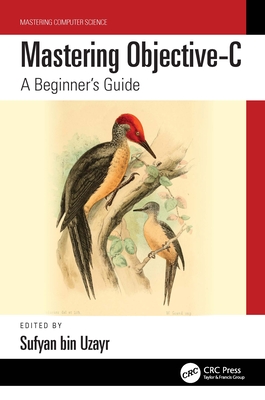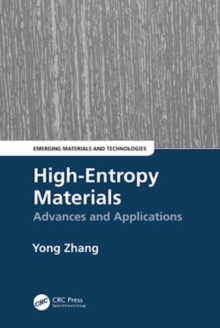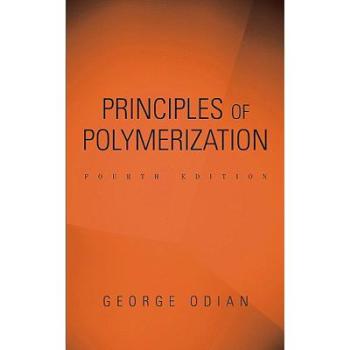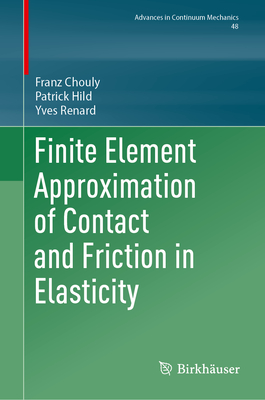图书简介
Praise for the Second Edition:"The authors present an intuitive and easy-to-read book. … accompanied by many examples, proposed exercises, good references, and comprehensive appendices that initiate the reader unfamiliar with MATLAB."—Adolfo Alvarez Pinto, International Statistical Review "Practitioners of EDA who use MATLAB will want a copy of this book. … The authors have done a great service by bringing together so many EDA routines, but their main accomplishment in this dynamic text is providing the understanding and tools to do EDA.—David A Huckaby, MAA ReviewsExploratory Data Analysis (EDA) is an important part of the data analysis process. The methods presented in this text are ones that should be in the toolkit of every data scientist. As computational sophistication has increased and data sets have grown in size and complexity, EDA has become an even more important process for visualizing and summarizing data before making assumptions to generate hypotheses and models. Exploratory Data Analysis with MATLAB, Third Edition presents EDA methods from a computational perspective and uses numerous examples and applications to show how the methods are used in practice. The authors use MATLAB code, pseudo-code, and algorithm descriptions to illustrate the concepts. The MATLAB code for examples, data sets, and the EDA Toolbox are available for download on the book’s website.New to the Third EditionRandom projections and estimating local intrinsic dimensionalityDeep learning autoencoders and stochastic neighbor embeddingMinimum spanning tree and additional cluster validity indicesKernel density estimation
Part I Introduction to Exploratory Data Analysis What is Exploratory Data Analysis Overview of the Text A Few Words about Notation Data Sets Used in the Book Unstructured Text Documents Gene Expression Data Oronsay Data Set Software Inspection Transforming Data Power Transformations Standardization Sphering the Data Further Reading Exercises Part II EDA as Pattern Discovery Dimensionality Reduction - Linear Methods Introduction Principal Component Analysis - PCA PCA Using the Sample Covariance Matrix PCA Using the Sample Correlation Matrix How Many Dimensions Should We Keep? Singular Value Decomposition - SVD Nonnegative Matrix Factorization Factor Analysis Fisher’s Linear Discriminant Random Projections Intrinsic Dimensionality Nearest Neighbor Approach Correlation Dimension Maximum Likelihood Approach Estimation Using Packing Numbers Estimation of Local Dimension Summary and Further Reading Exercises Dimensionality Reduction - Nonlinear Methods Multidimensional Scaling - MDS Metric MDS Nonmetric MDS Manifold Learning Locally Linear Embedding Isometric Feature Mapping - ISOMAP Hessian Eigenmaps Artificial Neural Network Approaches Self-Organizing Maps Generative Topographic Maps Curvilinear Component Analysis Autoencoders Stochastic Neighbor Embedding Summary and Further Reading Exercises Data Tours Grand Tour Torus Winding Method Pseudo Grand Tour Interpolation Tours Projection Pursuit Projection Pursuit Indexes Posse Chi-Square Index Moment Index Independent Component Analysis Summary and Further Reading Exercises Finding Clusters Introduction Hierarchical Methods Optimization Methods - k-Means Spectral Clustering Document Clustering Nonnegative Matrix Factorization - Revisited Probabilistic Latent Semantic Analysis Minimal Spanning Trees and Clustering Definitions Minimum Spanning Tree Clustering Evaluating the Clusters Rand Index Cophenetic Correlation Upper Tail Rule Silhouette Plot Gap Statistic Cluster Validity Indices Summary and Further Reading Exercises Model-Based Clustering Overview of Model-Based Clustering Finite Mixtures Multivariate Finite Mixtures Component Models - Constraining the Covariances Expectation-Maximization Algorithm Hierarchical Agglomerative Model-Based Clustering Model-Based Clustering MBC for Density Estimation and Discriminant Analysis Introduction to Pattern Recognition Bayes Decision Theory Estimating Probability Densities with MBC Generating Random Variables from a Mixture Model Summary and Further Reading Exercises Smoothing Scatterplots Introduction Loess Robust Loess Residuals and Diagnostics with Loess Residual Plots Spread Smooth Loess Envelopes - Upper and Lower Smooths Smoothing Splines Regression with Splines Smoothing Splines Smoothing Splines for Uniformly Spaced Data Choosing the Smoothing Parameter Bivariate Distribution Smooths Pairs of Middle Smoothings Polar Smoothing Curve Fitting Toolbox Summary and Further Reading Exercises Part III Graphical Methods for EDA Visualizing Clusters Dendrogram Treemaps Rectangle Plots ReClus Plots Data Image Summary and Further Reading Exercises Distribution Shapes Histograms Univariate Histograms Bivariate Histograms Kernel Density Univariate Kernel Density Estimation Multivariate Kernel Density Estimation Boxplots The Basic Boxplot Variations of the Basic Boxplot Violin Plots Beeswarm Plot Bean Plot Quantile Plots Probability Plots Quantile-Quantile Plot Quantile Plot Bagplots Rangefinder Boxplot Summary and Further Reading Exercises Multivariate Visualization Glyph Plots Scatterplots 2-D and 3-D Scatterplots Scatterplot Matrices Scatterplots with Hexagonal Binning Dynamic Graphics Identification of Data Linking Brushing Coplots Dot Charts Basic Dot Chart Multiway Dot Chart Plotting Points as Curves Parallel Coordinate Plots Andrews’ Curves Andrews’ Images More Plot Matrices Data Tours Revisited Grand Tour Permutation Tour Biplots Summary and Further Reading Exercises Visualizing Categorical Data Discrete Distributions Binomial Distribution Poisson Distribution Exploring Distribution Shapes Poissonness Plot Binomialness Plot Hanging Rootogram Contingency Tables Background Bar Plots Spine Plots Mosaic Plots Sieve Diagrams Log Odds Plot Summary and Further Reading Exercises Appendix A Proximity Measures Appendix B Software Resources for EDA Appendix C Appendix D MATLAB (R) Basics
Trade Policy 买家须知
- 关于产品:
- ● 正版保障:本网站隶属于中国国际图书贸易集团公司,确保所有图书都是100%正版。
- ● 环保纸张:进口图书大多使用的都是环保轻型张,颜色偏黄,重量比较轻。
- ● 毛边版:即书翻页的地方,故意做成了参差不齐的样子,一般为精装版,更具收藏价值。
关于退换货:- 由于预订产品的特殊性,采购订单正式发订后,买方不得无故取消全部或部分产品的订购。
- 由于进口图书的特殊性,发生以下情况的,请直接拒收货物,由快递返回:
- ● 外包装破损/发错货/少发货/图书外观破损/图书配件不全(例如:光盘等)
并请在工作日通过电话400-008-1110联系我们。
- 签收后,如发生以下情况,请在签收后的5个工作日内联系客服办理退换货:
- ● 缺页/错页/错印/脱线
关于发货时间:- 一般情况下:
- ●【现货】 下单后48小时内由北京(库房)发出快递。
- ●【预订】【预售】下单后国外发货,到货时间预计5-8周左右,店铺默认中通快递,如需顺丰快递邮费到付。
- ● 需要开具发票的客户,发货时间可能在上述基础上再延后1-2个工作日(紧急发票需求,请联系010-68433105/3213);
- ● 如遇其他特殊原因,对发货时间有影响的,我们会第一时间在网站公告,敬请留意。
关于到货时间:- 由于进口图书入境入库后,都是委托第三方快递发货,所以我们只能保证在规定时间内发出,但无法为您保证确切的到货时间。
- ● 主要城市一般2-4天
- ● 偏远地区一般4-7天
关于接听咨询电话的时间:- 010-68433105/3213正常接听咨询电话的时间为:周一至周五上午8:30~下午5:00,周六、日及法定节假日休息,将无法接听来电,敬请谅解。
- 其它时间您也可以通过邮件联系我们:customer@readgo.cn,工作日会优先处理。
关于快递:- ● 已付款订单:主要由中通、宅急送负责派送,订单进度查询请拨打010-68433105/3213。
本书暂无推荐
本书暂无推荐













